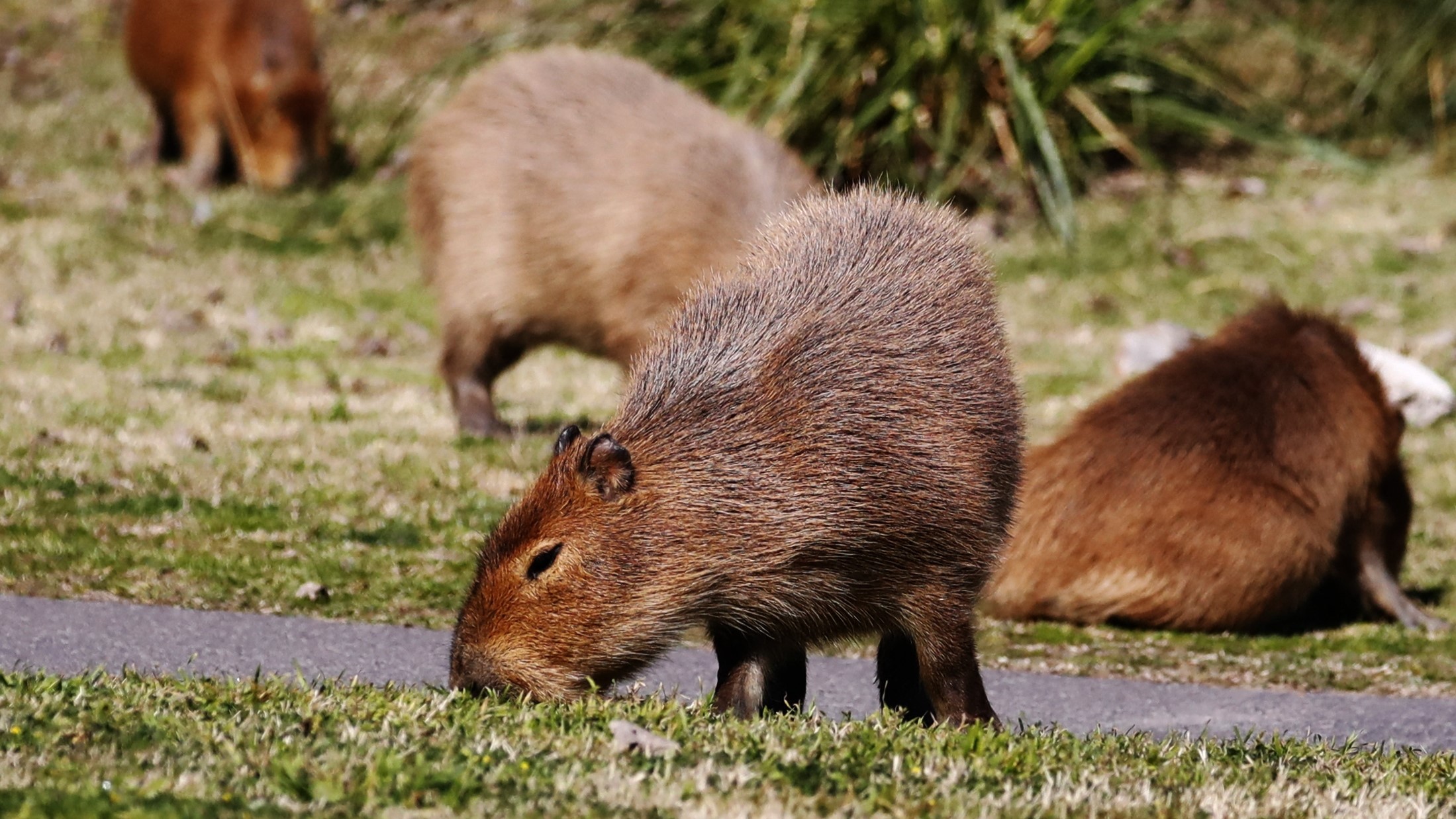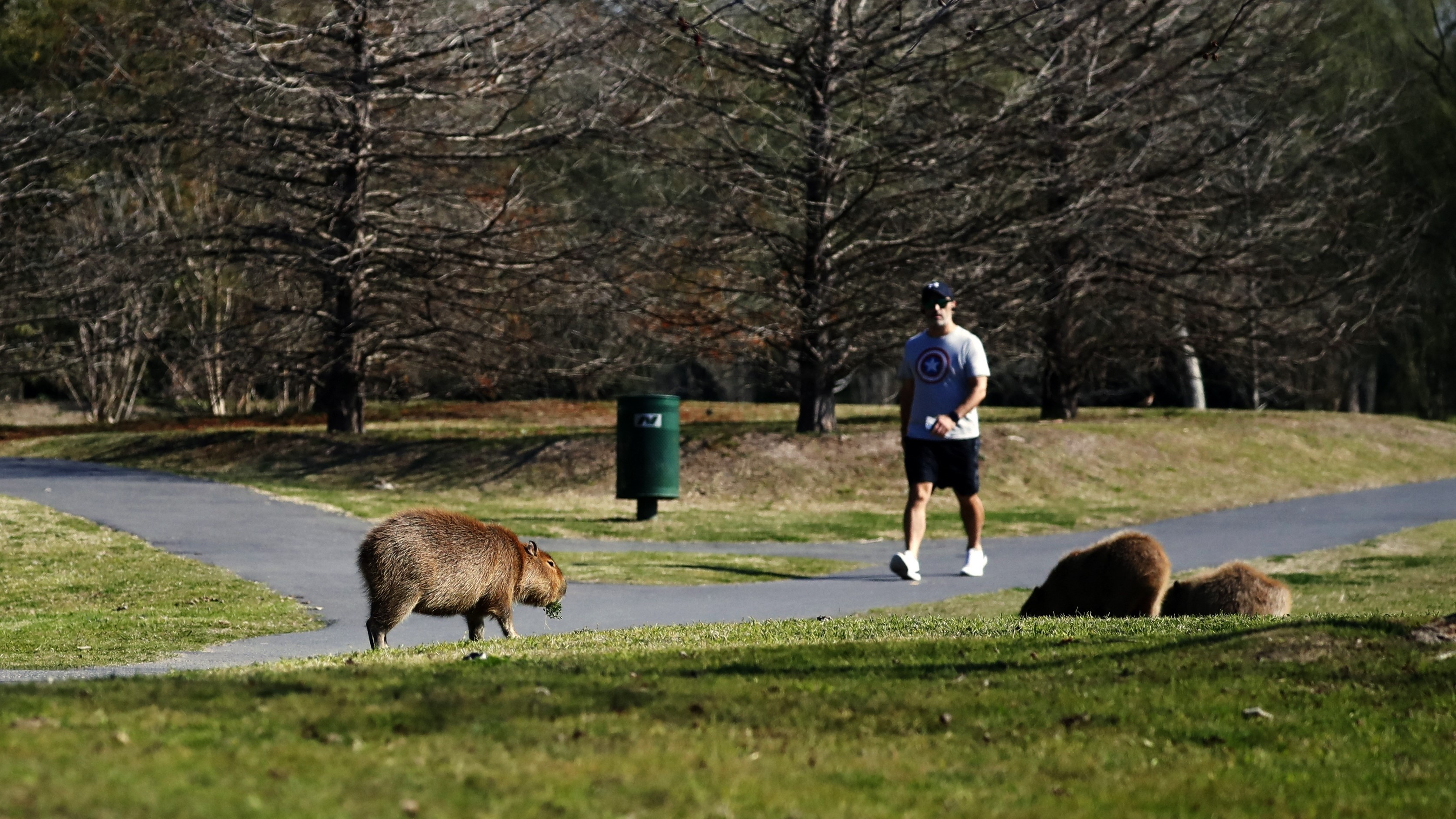World's largest rodents are taking over a fancy gated community in Argentina
Residents have reported scraps with pets, traffic accidents and poop-covered lawns.

The residents of a gated community in Argentina are struggling to get along with some unruly new neighbors: hundreds of the world's largest rodents.
The capybaras (Hydrochoerus hydrochaeris), also known as carpinchos, have been running rampant for weeks inside Nordelta, an affluent neighborhood north of Buenos Aires that is home to around 40,000 people. Local residents have reported that the robust rodents, which can reach over 4 feet (1.2 meters) long and weigh up to 174 pounds (79 kilograms), have been pooping in gardens, destroying flower beds, causing traffic accidents and allegedly biting pet dogs, although capybaras are not known to be aggressive toward humans or pets, according to Argentine newspaper La Nacion.
However, environmentalists say the capybaras are not invading Nordelta but rather taking back their home from the multimillion-dollar development, which, in the late 1990s, was built on top of ecologically important wetlands surrounding the banks of the Paraná River, the second-largest river in South America.
Related: 15 of the largest animals of their kind on Earth
"It's the other way round: Nordelta invaded the ecosystem of the carpinchos," Enrique Viale, a prominent Argentine environmental lawyer, told The Guardian. "Wealthy real-estate developers with government backing have to destroy nature in order to sell clients the dream of living in the wild," he added, "because the people who buy those homes want nature, but without the mosquitoes, snakes or carpinchos."

Capybaras never completely disappeared from Nordelta after the community was completed, but their population plummeted due to the loss of habitat and disturbance caused by construction. Now, after decades without any natural predators, such as jaguars, their population is rising again, with a 17% increase in the past year. Currently, around 400 capybaras roam Nordelta, but experts think that, at the current rate, the population could eventually reach around 3,000, according to La Nacion.
Nordelta residents want officials to remove capybaras from the development and introduce new measures to stop the rodents from freely wandering around the 3,000-acre (1,214 hectare) community — for instance, by adding reinforced hedgerows and fencing, according to La Nacion. Some locals have also threatened to shoot the capybaras, although so far, none have been killed, according to The Guardian.
Sign up for the Live Science daily newsletter now
Get the world’s most fascinating discoveries delivered straight to your inbox.
In response, environmental activists have been protesting within Nordelta over the past week, many wearing mascot-like cardboard capybara headpieces, to call for the government to protect the capybaras and allow them to remain within their once-natural habitat, according to La Nacion.
The capybaras have also become popular among the Argentine public, particularly within Buenos Aires, with many poorer people seeing them as a symbol of a class war against the city's elite, who have destroyed an important ecosystem to separate themselves from the poorer communities, according to The Guardian.
For example, Nordelta has changed the natural drainage systems provided by the wetlands and regularly causes flooding in the surrounding communities. "When there are extreme weather events, it is the poorer surrounding neighborhoods that end up flooded," Viale told The Guardian. "As always, it is the poor who end [up] paying the price.”
Some experts believe that, because of the backlash from environmentalists and poorer communities, Nordelta residents will have to get used to their new neighbors rather than remove them.
"Nordelta is an exceptionally rich wetland that should never have been touched," Sebastian di Martino, a biologist and conservation director at the Rewilding Argentina Foundation, told French news agency AFP. "Now that the damage has been done, the residents need to reach a certain level of coexistence with the carpinchos."
Originally published on Live Science.

Harry is a U.K.-based senior staff writer at Live Science. He studied marine biology at the University of Exeter before training to become a journalist. He covers a wide range of topics including space exploration, planetary science, space weather, climate change, animal behavior and paleontology. His recent work on the solar maximum won "best space submission" at the 2024 Aerospace Media Awards and was shortlisted in the "top scoop" category at the NCTJ Awards for Excellence in 2023. He also writes Live Science's weekly Earth from space series.









